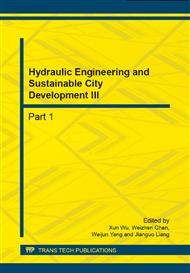p.1251
p.1256
p.1260
p.1264
p.1271
p.1275
p.1280
p.1284
p.1287
Construction of Community Logistics Distribution Network Based on K-Means Algorithm
Abstract:
The paper take the distribution radius and carry capacity as constraint conditions, the author uses two-stage K-means algorithm to cluster community service shops, and determines the distribution region of distribution centers, and constructs a suitable model for distribution center’s locating. Basing on the clustering result, the incompatible two kinds items, i.e. fresh items and the items shopped online, are united in a model to be solved. Since bottom-up approach is used to build distribution network step by step, a multi-objective programming is converted into two relatively independent single goal programming, so the network’s optimization result is of good controllability, and the algorithm’s complexity is greatly reduced. Finally, take 100 communities fresh items as examples to implement algorithm.
Info:
Periodical:
Pages:
1271-1274
Citation:
Online since:
September 2014
Authors:
Price:
Сopyright:
© 2014 Trans Tech Publications Ltd. All Rights Reserved
Share:
Citation:


